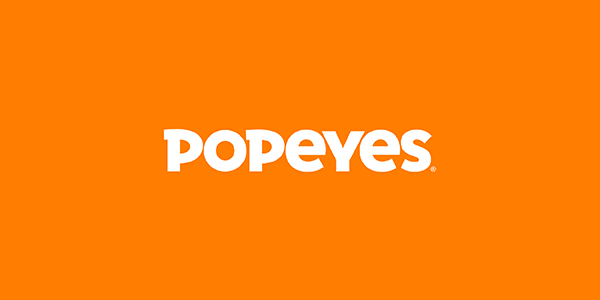4 Media Buying Insights To Drive 2024 Performance

In recent years, the digital marketing landscape has experienced varying degrees of upheaval. The sudden onset of the pandemic spurred an accelerated adoption of digital, followed by an uncertain post-pandemic economy that led to scaled back media budgets. Meanwhile, the rise of artificial intelligence (AI), evolution of the privacy landscape, and the deprecation of the cookie has shifted marketing executions.
In 2024, media buyers will need to adapt to the changing media landscape to maximize the effectiveness and ROI of their campaigns. Below, we’re highlighting the trends that are on the rise, the challenges they may present, and how you can leverage those challenges to drive success and maximum impact.
4 Trends To Elevate Your Advertising Performance in 2024
1. Time Spent With Media is Plateauing
Data from eMarketer shows steep growth in time spent with media up until 2022. The growth started to uptick in 2020, a clear correlation with the onset of the pandemic. After that first year of the pandemic, this growth started to plateau.
While this plateau in time spent with digital media might seem like a negative trend, it’s actually an opportunity to shift your digital strategy to reach audiences wherever they happen to be online, and on their preferred channel. The goal is not quantity, it’s quality.
A tried-and-true strategy for reaching high-quality audiences is to optimize targeting so that it mimics the customer journey. Leverage a conversion journey tool to gain a comprehensive look into the key touch points of your conversions, like time-to-conversion, click-to-conversion, and domain-to-conversion.
Track important events such as purchases and form fills, see when and where each conversion took place, and view the exact domain where an ad was served. With this intel, you can optimize your targeting to align with key touch points in your customers’ journey.
One thing to keep in mind is that customer journeys don’t typically stay confined to one channel. Leverage a multi-channel strategy to create multiple points of contact for the target audience, which will create more opportunities for acquisition.

2. Artificial Intelligence (AI) is Enhancing Precision in Programmatic
The relevance of AI in digital marketing is growing. According to McKinsey, generative AI’s impact on productivity could add trillions of dollars in value to the global economy. In 2024, leverage a programmatic platform that uses AI to enhance precision when reaching your target audience.
Harnessing the power of AI with programmatic advertising can offer a transformative advantage, with machine learning taking the reins to streamline complex processes. For media buyers, AI can assist in analyzing large amounts of data, making it possible to uncover actionable insights that can be activated quickly.
AI can also be leveraged for more efficient and effective campaign performance and management. Media buying teams can leverage AI tools to automate repetitive tasks, making it possible to dedicate more of their brain power to strategic thinking and planning.
The effectiveness of programmatic platforms in optimizing AI-driven advertising is all thanks to their capacity to incorporate advanced technologies, streamline operations, and derive valuable insights from extensive data sets.
Media buyers can tap into these benefits to create effective campaigns that maximize impact and manage spend more efficiently. With a more predictable media consumption landscape, they can focus on channels and times that yield the best engagement, rather than spreading resources thinly across an ever-expanding media landscape.
3. First-Party Data Will Help Overcome Cookie Deprecation
With the privacy landscape evolving, media buyers (and brands!) need to actively invest in gathering 1st-party data as a means to keep audiences addressable. This is often viewed as a strategic workaround for the loss of cookies, which can help keep consumer connections intact. While it certainly is, don’t overlook the full potential of activating 1st-party data.
By using 1st-party data, you can measure actions that are highly specific to clients or brands. The beauty of it is that you can get as granular as your data goes. First-party data is also deterministic making it highly reliable. It provides you with a competitive advantage by enabling you to optimize your strategies, improve customer experiences, and create more personalized marketing campaigns.
For example, leverage CRM upload to match your client offline conversion data to online campaigns in a privacy-safe way, either mid- or post campaign. With this data, you can improve the effectiveness of your ad spend and uncover total return on investment from campaigns on offline conversions.
4. Consolidate Reporting for Multi-Channel Campaigns
According to an exclusive research report conducted by StackAdapt in partnership with Advertiser Perceptions, media buyers in 2023 found that they have difficulty measuring their goals across different channels. To overcome this challenge in 2024, media buying leaders should equip their teams with a means to consolidate reporting.
One way to do this is to leverage a single platform to run multi-channel campaigns. This helps to simplify reporting and can alleviate advertiser grief. Reporting that is consolidated by one platform means the reporting is done using the same methodology and technology, making the data consistent and clear across channels.

Another pain point that advertisers in 2023 identified as a challenge in running multi-channel campaigns, is that running ads on various channels requires different creative assets.
Repurposing content is a simple strategy for overcoming this barrier. For example, display and video ads can be repurposed to run on digital out-of-home (DOOH), and stills from video ads can be leveraged as display ads that have in-banner video.
In 2024, your media teams should repurpose content not just across programmatic channels, but across search and social as well. This will extend the reach of campaigns to channels that drive performance, without the need for more investment in creative.
Adapting to 2024’s Media Landscape
In the upcoming year, prominent trends are expected to revolve around continued economic uncertainties, the ongoing adoption of AI in advertising, the changes to privacy, and audience behaviour–like plateauing time spent with media.
For success in this media landscape, it’s crucial for marketers to not only be on top of these current and anticipated advancements, but analyze and test how these trends can be leveraged to achieve maximum impact.
Want to run exceptional programmatic campaigns? Request a demo to learn more about StackAdapt.






